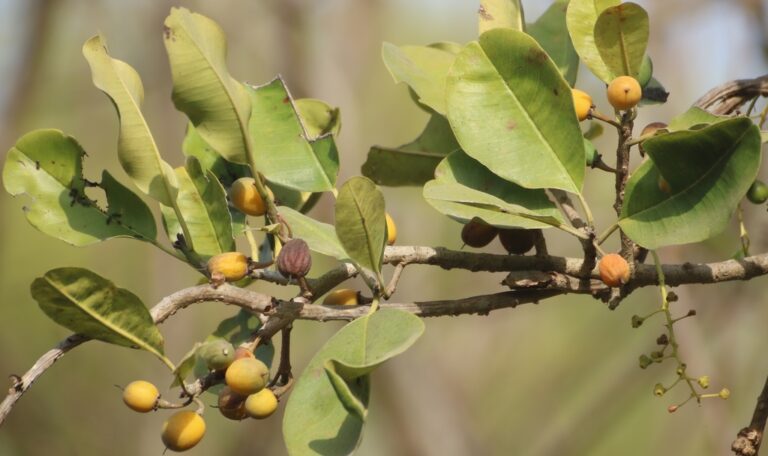Botanical name: Manilkara hexandra | Hindi: खिरनी | Marathi: खिरणी | English: Khirni
About
The Khirni tree, Manilkara hexandra, also known as the sapodilla or naseberry, is an evergreen beauty reaching 20-30 meters tall. Its smooth, grey bark and dense canopy of glossy, elliptical leaves create a majestic presence. Clusters of small, white flowers with a sweet fragrance adorn the branches, later transforming into spherical, brown fruits. These fruits, 2-5 cm in diameter, possess a thin, rough skin covering a sweet, creamy flesh with large, black seeds.
Interesting Facts

Medicinal Uses: Khirni boasts a rich legacy in traditional medicine across different cultures. The bark is valued for its anti-inflammatory and astringent properties, used to treat wounds, diarrhea, and fever. The leaves are known for their anti-bacterial and anti-diabetic effects, while the fruit itself is believed to promote digestive health and boost immunity. The milky sap extracted from the tree has historical uses as a contraceptive and wound sealant. Recent research explores its potential in treating various ailments, making Khirni a fascinating subject for future medicinal studies.

Environmental Impact: Khirni isn’t just delicious, it also contributes positively to the environment. Its robust nature and slow growth make it a valuable source of sustainable timber, reducing pressure on faster-growing species. The tree plays a crucial role in maintaining healthy ecosystems by providing food and shelter for various wildlife species. Additionally, its deep root system helps prevent soil erosion and promotes healthy soil fertility. As we strive for sustainable practices, Khirni emerges as a valuable player in environmental conservation.

Food & Culinary usage: Khirni’s culinary potential is as diverse as its cultural significance. The ripe fruit, with its creamy texture and sweet, honey-like flavor, is devoured fresh or used in desserts, smoothies, and ice cream. Unripe fruits find their way into chutneys and pickles, adding a unique astringency. The seeds, once roasted and ground, create a flavorful flour used in various dishes. Khirni’s leaves are utilized in curries and soups, and even the milky sap finds use in chewing gum and traditional candies. This fruit’s versatility inspires culinary creativity across the globe.

